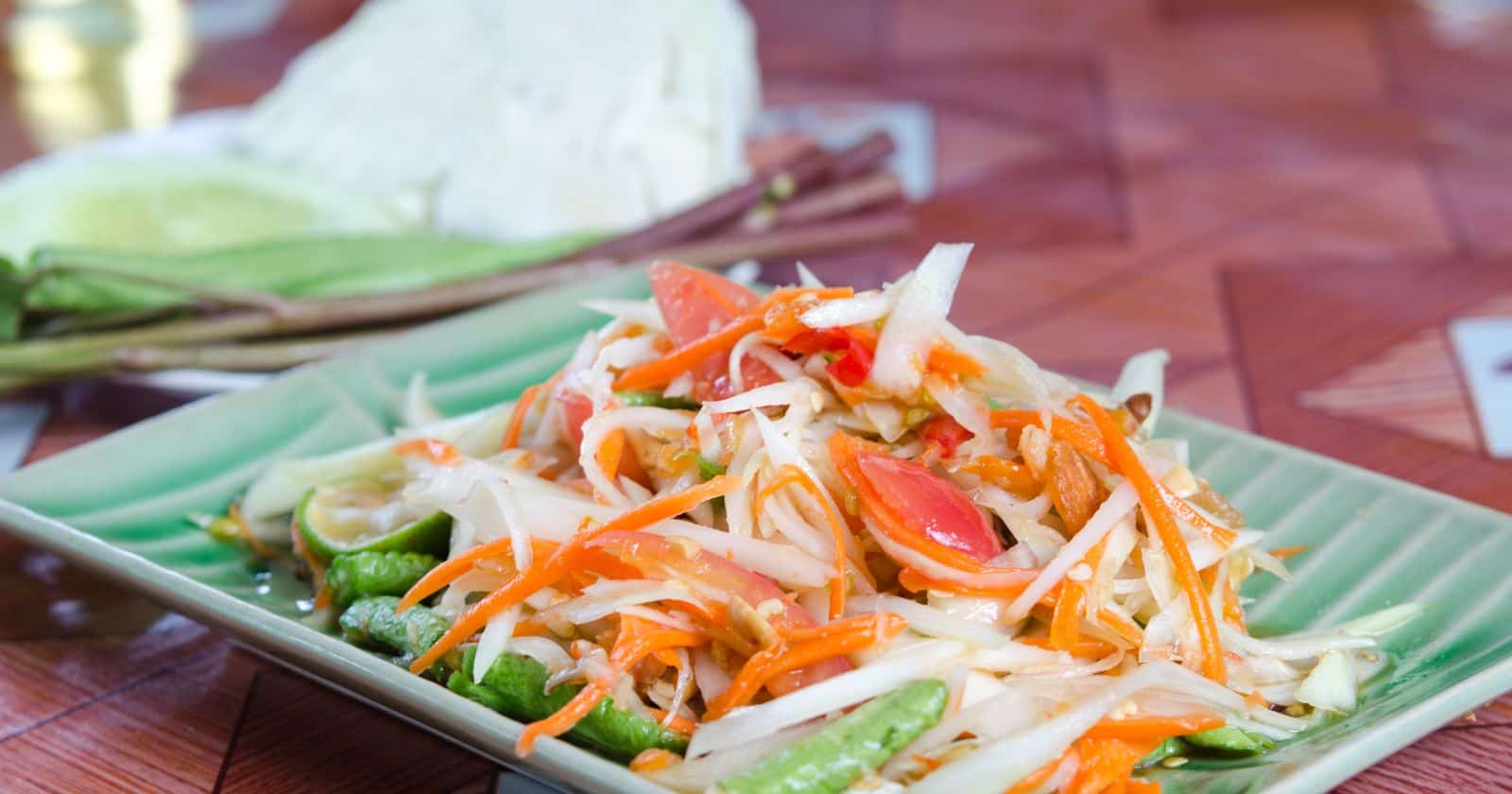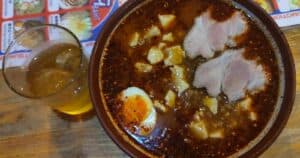Thai cuisine brings a world of vibrant flavors to the table. From sweet to spicy and savory to tangy, Thai dishes offer an exploration of the senses. However, for those with peanut allergies, the presence of peanuts in many Thai recipes can be dangerous. This leads many to ask: does Thai food have peanuts?
While peanuts play a prominent role in Thai gastronomy, there are plenty of peanut-free Thai options to savor. This article will uncover the key things you need to know about peanuts in Thai food, including:
- Popular Thai dishes with peanuts
- Peanut-free alternatives
- Communicating allergies to restaurants
- Embracing the diversity of Thai cuisine
- Accommodating dietary restrictions
After reading, you’ll have the knowledge to indulge in Thai cuisine safely and confidently. Time to satisfy those taste buds!
Why Does Thai Food Use Peanuts So Often?
Thai food intertwines a blend of cultural influences from Chinese to Indian cuisines. This fusion has created a cuisine known for its balance of flavors – sweet, salty, sour and spicy.
Peanuts add texture and a nutty depth that complements these flavors beautifully. Additionally, peanuts are easily accessible and affordable in Thailand, making them a versatile ingredient.
Over the centuries, peanuts have become deeply ingrained in Thai culinary tradition through iconic dishes like:
Popular Peanut-Based Thai Dishes
- Pad Thai – Rice noodles stir-fried with peanuts, eggs, tamarind, and lime
- Satay – Skewered meat with spicy peanut dipping sauce
- Massaman Curry – Rich, coconut curry made with peanuts
- Som Tum – Spicy green papaya salad uses peanuts for crunch
However, while ubiquitous, peanuts are not in every Thai recipe. Next, we’ll uncover some delicious peanut-free Thai cuisine.
Satisfying Peanut-Free Thai Food Options
If you need to avoid peanuts, take heart. Here are some flavorful peanut-free Thai dishes to try:
Thai Soups
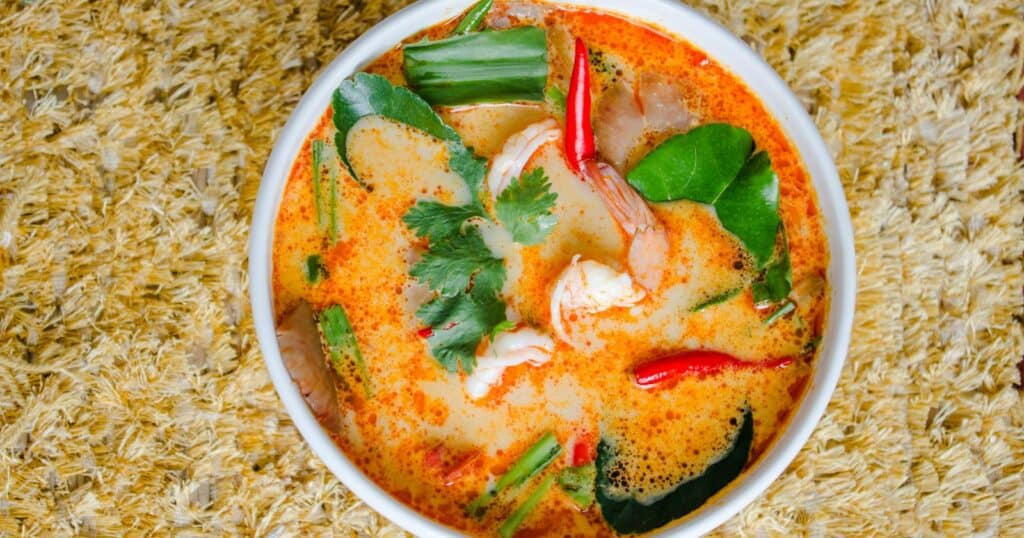
- Tom Yum – Spicy, sour broth with shrimp, lemongrass, lime, and mushrooms
- Tom Kha – Coconut milk soup infused with galangal, lime, chilies, and chicken
- Kaeng Jeud – Mild veggie soup with glass noodles, bok choy, and tofu
Thai Curries
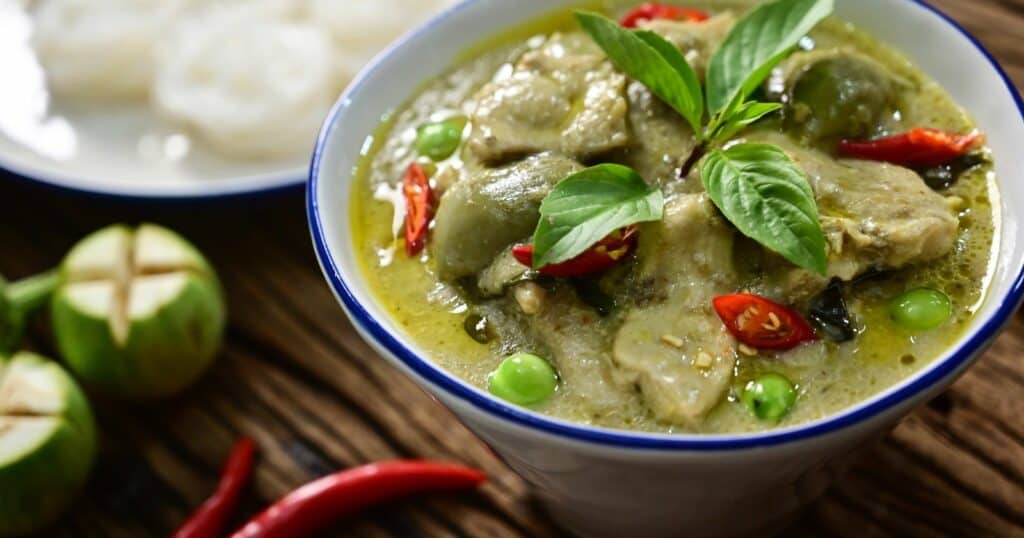
- Green Curry – Zesty, herbal curry made with green chilies, basil, and chicken
- Red Curry – Rich, coconut curry with bamboo shoots, bell peppers, and duck
- Panang Curry – Creamy, spicy curry with beef, green beans, and lime leaves
Noodle Dishes
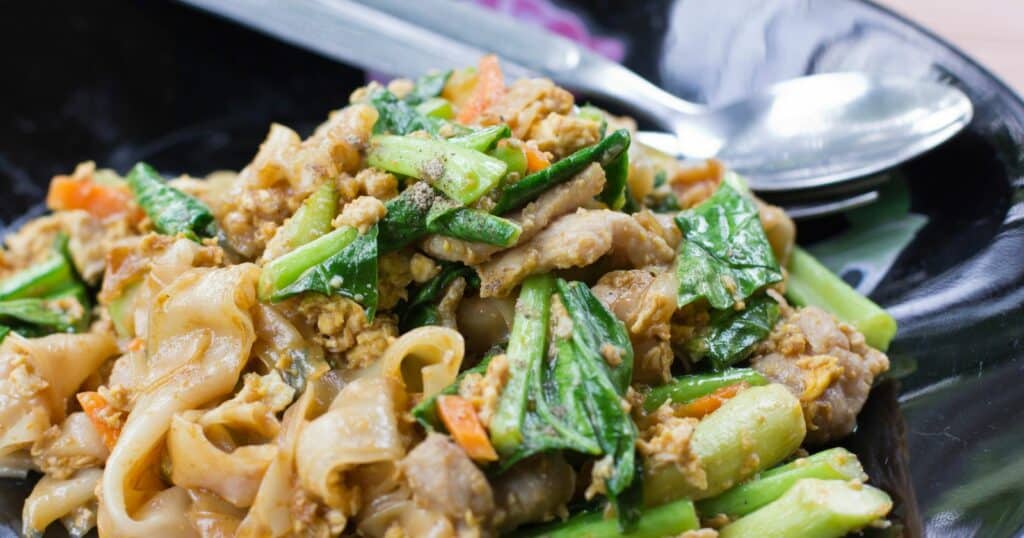
- Pad See Ew – Broad rice noodles pan-fried with soy sauce, Chinese broccoli, eggs, and chicken
- Pad Kee Mao – Flat rice noodles sautéed with basil, tomatoes, onions, bell peppers, and seafood
- Khao Soi – Coconut curry noodle soup with chicken, pickled cabbage, crispy noodles, and lime
Rice Dishes
- Khao Pad – Thai fried rice loaded with eggs, chicken, onions, tomatoes, cilantro
- Khao Niao Mamuang – Sticky mango rice drizzled with sweetened coconut cream
- Khao Tom – Sweet rice soup with ginger, banana, and tapioca balls
This sampling shows you can still experience complex Thai flavors minus the peanuts. Now let’s look at how to stay safe when dining out.
Do Thai Sauces Contain Peanuts?
Thai sauces add dynamic flavor to many dishes. But do these sauces also add peanuts? Here’s an overview of peanut content in key Thai sauces:
- Peanut Sauce – This thick, creamy sauce is made primarily from pulverized peanuts and peanut butter. It contains high levels of peanut protein.
- Satay Sauce – Another peanut-based dipping sauce blended with coconut milk and spices. Peanut proteins present.
- Pad Thai Sauce – The tangy sauce drizzled on pad thai often contains peanuts, though some versions use other nuts or seed butters instead. Ask before ordering.
- Fish Sauce – This pungent, amber-hued sauce made from fermented anchovies rarely has peanuts. But some brands may use peanut oil, so check labels.
- Soy Sauce – Tamari-style soy sauce has no peanuts, but regular soy sauce could contain traces from manufacturing. Opt for tamari to be safe.
- Hot Chili Sauce – Sauces like sriracha are typically peanut-free, using just chilies, garlic, vinegar, and salt. But verify ingredients.
- Curry Pastes – Spicy curry pastes like red, green, panang, and massaman likely don’t have peanuts, but it can’t hurt to ask.
Knowing which Thai sauces contain peanuts enables you to choose your menu items wisely to avoid an allergic reaction. Don’t be afraid to inquire about sauces and ingredients.
Communicating Peanut Allergies at Thai Restaurants
Dining out with food allergies requires proactive communication:
Be Clear About Your Allergy
- Tell your server explicitly you have a peanut allergy and even small amounts could cause a reaction
- Specify the allergy again when ordering to prevent mix-ups
- Carry a chef card detailing your allergy to show restaurant staff
Make Your Allergy Visible
- Ask if the restaurant can make a visible allergy alert on your table
- Politely remind staff of your allergy when they approach your table
- Wear a medical alert bracelet or necklace stating your peanut allergy
Ask Questions Up Front
- Inquire if there is a high risk of cross-contamination from peanuts
- Ask which menu items are safest for your allergy
- Request ingredients lists for menu items you’re interested in
Build a Rapport with Staff
- Maintain a friendly, calm demeanor when discussing your allergy
- Thank staff for taking steps to accommodate your needs
- Get contact info for management to provide feedback after your visit
With good communication and attentive staff, dining out with peanut allergies is much more manageable. Now, let’s explore what makes Thai cuisine so diverse and delightful.
The Severity of Peanut Allergies
Peanut allergies can range from mild to life-threatening depending on the individual. Understanding where you fall on this severity spectrum is crucial for managing your condition.
Mild Reactions
For those with a mild peanut allergy, consuming peanuts may cause:
- Hives or itchy skin
- Tingling in the mouth
- Swelling of the lips, face, tongue, throat or other body parts
- Runny or stuffy nose
- Abdominal pain, nausea, vomiting, diarrhea
- Lightheadedness
While uncomfortable, mild reactions are not immediately dangerous if promptly treated.
Moderate Reactions
People with a moderate peanut allergy may experience more troubling symptoms like:
- Tightness in the throat making breathing or swallowing difficult
- Repetitive coughing
- Wheezing
- Increased heart rate
- Anxiety
Medical attention is recommended for moderate allergic reactions to monitor breathing and vital signs.
Severe Reactions
For those with a severe peanut allergy, exposure can quickly spark a dangerous, whole-body reaction known as anaphylaxis. Signs of anaphylaxis include:
- Constricted airways leading to trouble breathing
- A swollen tongue or throat blocking airflow
- Drastic drop in blood pressure
- Rapid pulse
- Dizziness, fainting, loss of consciousness
- Severe stomach cramps, vomiting
- Shock
Anaphylaxis requires epinephrine and emergency medical treatment to halt and reverse the reaction. Delaying epinephrine can be fatal.
Assessing your personal allergy severity empowers you to take appropriate precautions when dining out and responding to allergic reactions. Those at risk for anaphylaxis must be extra vigilant.
How Cross-Contamination Happens
When dining out with peanut allergies, cross-contamination is a concern. This occurs when trace amounts of peanuts inadvertently come into contact with a peanut-free meal. Some ways cross-contamination can happen include:
- Shared Cooking Equipment – Woks, utensils, cutting boards, fryers, and other kitchen tools used for peanut-containing dishes may transfer peanut residue to allergen-free dishes cooked after.
- Shared Ingredients – Oils, seasonings, sauces, and other ingredients used for multiple menu items can pick up peanut proteins and carry them into other foods.
- Airborne Particles – When peanut-based dishes are cooked, peanut proteins can become aerosolized and float through the air, landing on other exposed food.
- Hand Contact – If kitchen staff handle peanuts then don’t wash hands thoroughly afterwards, they can transfer peanut proteins through touch.
- Splattering – Vigorous frying or sautéing of peanutty dishes can send droplets of hot peanut oil landing on nearby allergen-free food.
- Shared Surfaces – Peanut particles can be spread by contact with preparation tables, stove tops, sinks, etc. used for all dishes.
Knowing how cross-contamination occurs equips you to have informed conversations with restaurant managers about food prep protocols. Ensuring thorough cleaning measures are in place is key for safer dining.
How to Handle Dietary Needs When Eating Thai
With its blend of ingredients and cooking methods, Thai food can fit an array of diets:
Dairy Restrictions
- Most Thai dishes use little or no dairy besides coconut milk
- Ask about hidden dairy like fish sauce made with whey
Vegetarian and Vegan
- Many vegetable, tofu, and noodle dishes are vegan already
- Curries and stir-fries can be made meatless upon request
Gluten-Free
- Rice noodles, sticky rice, and rice dishes are gluten-free
- Request gluten-free soy sauce or tamari and avoid wheat-based noodles
Keto and Low-Carb
- Focus on grilled meat entrees served over veggies instead of rice
- Skip the sugar in Thai desserts and some sauces or curries
With good communication, Thai restaurants can accommodate various dietary needs creatively.
In Summary
While peanuts play a big role in Thai cuisine, those with peanut allergies need not miss out on the joys of Thai food. With an awareness of menu options, proactive communication, and an embrace of Thai cuisine’s diversity, you can discover a world of mouthwatering Thai flavor minus the peanuts.

